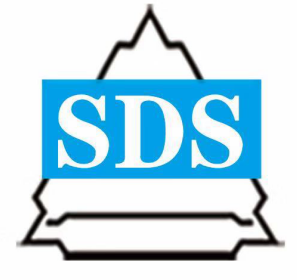What Kind of Steel Fiber is Used for Bridge Expansion Joint Concrete?
First of all, the shape of steel fiber is divided into milling type is what we often say wave, corrugated type, as well as shear type and end hook type, dumbbell type, and so on. So how to choose which steel fiber to use for bridge expansion joint concrete?
Ⅰ. The role of steel fibers in concrete
The fiber volume ratio of ordinary steel fiber concrete is between 1% and 2%. Compared with ordinary concrete, the tensile strength is increased by 40% to 80%, the flexural strength is increased by 60% to 120%, and the shear strength is increased by 50% to 100%. %. The increase in compressive strength is small, which is generally between 0-25%, but the compressive toughness is greatly improved. Steel fiber concrete is a new type of multiphase composite material formed by mixing short steel fibers in the disorderly distribution in ordinary concrete. These randomly distributed steel fibers can effectively hinder the expansion of micro-cracks and the formation of micro-cracks in the concrete. They significantly improve the tensile, flexural, impact, and fatigue resistance of concrete. They also have good ductility.
Ⅱ. The selection of steel fiber
In modern construction technology, wet sprayed steel fibers used in concrete is gradually adopted. Steel fiber 20 to 40 mm long and 0.5 mm thick is currently used. Its advantages of steel fiber reinforced concrete are as follows.
1. The rebound rate of 5% to 10% is much lower than that of dry spray.
2. There is no rebound of steel fibers and the rebound can also be controlled when 40mm steel fibers are used.
3. The quality of concrete is uniform, which usually reaches the strength of 55MPA. In special operations, it can reach 100MPA.
4. Good environmental conditions and less dust.
5. Safe operation.
6. Small water-cement ratio and low water permeability.
7. No anti-corrosion treatment is required, which can prevent electrolysis and accelerate corrosion.
Feeding requirements:
1. Now put the steel fibers and coarse aggregates into the mixer for 30 seconds, so that the steel fibers are dispersed in the stones and will not be united.
2. Put the sand and cement into the mixer and dry for 30 seconds.
3. Add water to the mixing blender and blend for another 3 minutes.
The mixing can be carried out in the following order:
1. The general mixing station has small and big sizes, but the basic functions are the same, so the procedures for adding steel fibers should be the same.
2. On the conveyor belt, the dry sand and stone are usually put into the hopper first. According to the design proportion, they are delivered into the mixing bucket first.
3. Add an appropriate amount of steel fiber to the dry material.
4. When the sand, stone, and steel fibers are all poured into the hopper, dry mixing can be performed. Usually dry mix for one to two minutes.
5. Add water for concrete mixing.
6. Load the mixed steel fiber cement concrete into the truck and then it can be transported to the construction site for use.
7. The paving process can use large-scale machinery or manual paving, which is the same as ordinary concrete paving.
8. When the paving is completed, it must be vibrated and compacted with a compactor without leaving bubbles or blisters to ensure the solidification of the concrete.
9. The final leveling of the concrete surface can be done manually or mechanically. Be careful not to expose the steel fibers to the surface.
 English
English 한국어
한국어 français
français Deutsch
Deutsch русский
русский português
português العربية
العربية tiếng việt
tiếng việt ไทย
ไทย Polska
Polska Nederland
Nederland